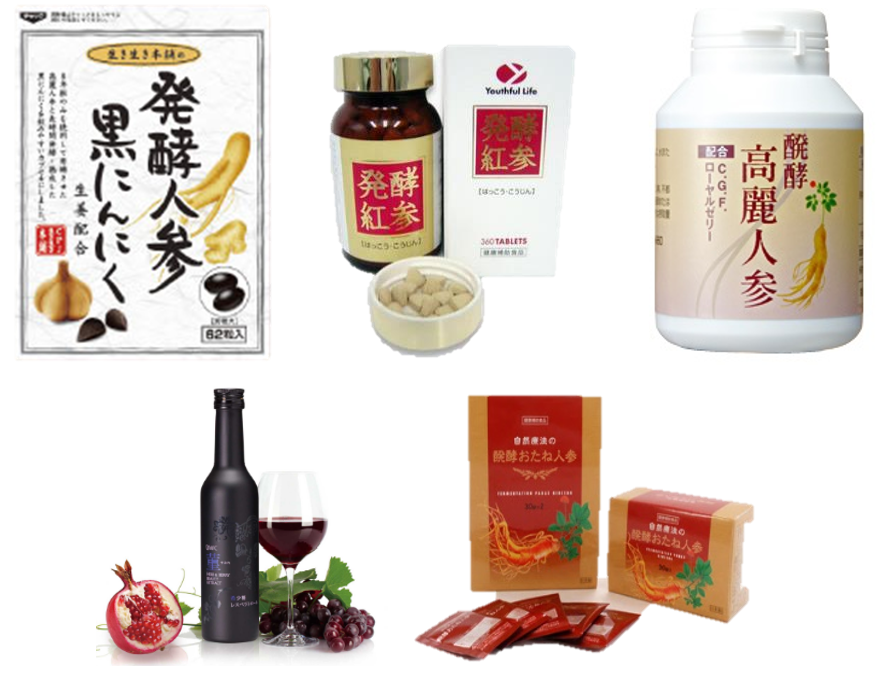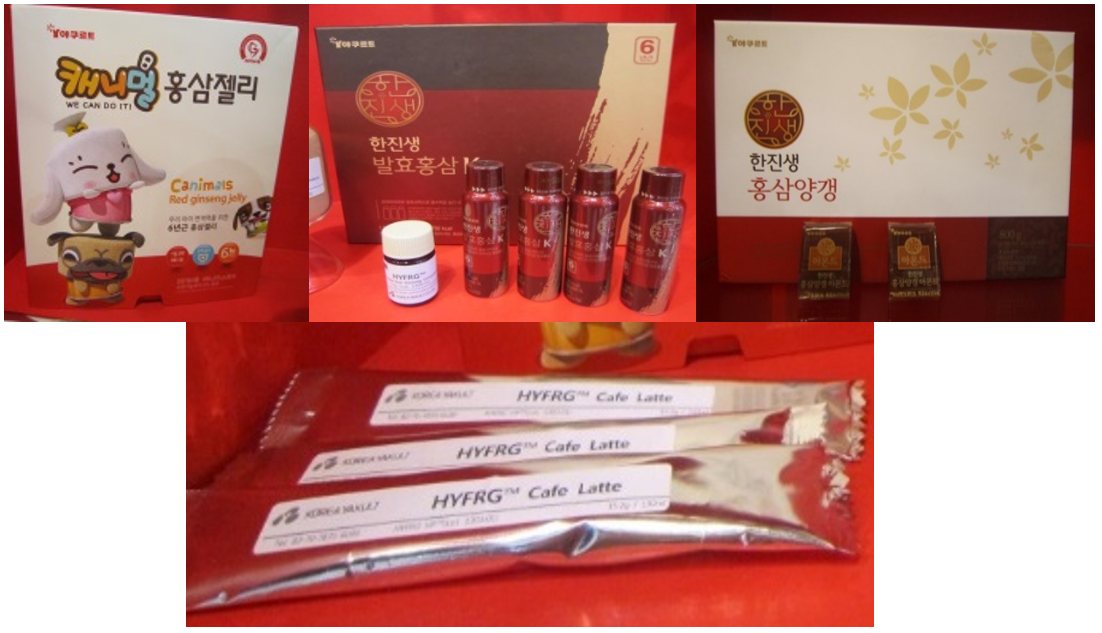
Korea is Rooted in Excellence in Ginseng
Since ginseng was discovered over 5,000 years ago, it has long been used as a herbal tonic throughout East Asia. Ginseng is well-known for its multiple health benefits which include recovering energy, improving vitality, relieving stress, maintaining good immunity, etc.
Korean ginseng (Panax ginseng Meyer) is well known for its superior quality. The Korean environment directly contributes to the root’s powerful structure, helping it to yield more bioactives (saponins/ginsenosides). Other ginseng species, such as American, Japanese and Chinese ginseng, produce only a fraction of the total ginsenosides that Korean ginseng can generate.
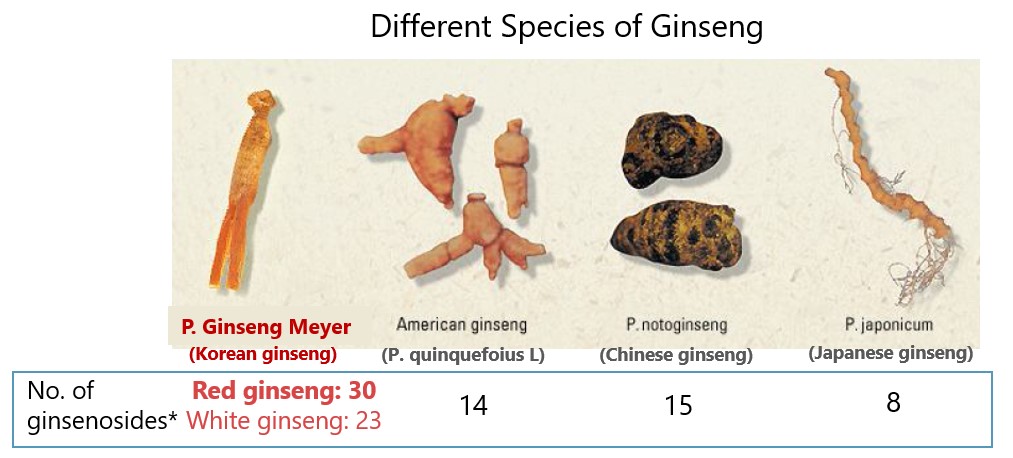
The Story of HYFRG™: Biotransformation by Kimchi Probiotics & Enzymes
Most consumers do not experience instant effects after taking ginseng. The benefits of normal white or red ginseng can only be experienced after prolonged intake, due to the low bioavailability of minor ginsenosides.
Ginsenosides are bioactive compounds in ginseng that contributes to its pharmacological actions in human body and strengthens immunity. These large (major) molecules must be broken down by intestinal microflora into their minor units for the human body to absorb. Nevertheless, factors such as deteriorating health conditions, unhealthy diet and stress affect our intestinal microflora, causing different individuals to absorb ginsenosides differently.
HYFRG™ goes one step further in proprietary biotranformation process with Kimchi probiotics and GRAS enzymes, to break down 90% of major red ginseng ginsenosides into minor units that can be readily absorbed in the body, regardless of the microflora environment. This process standardizes and maximizes the bioavailability of ginseng bioactives.
Now, everyone can experience the instant goodness of Korean red ginseng to its fullest potential!
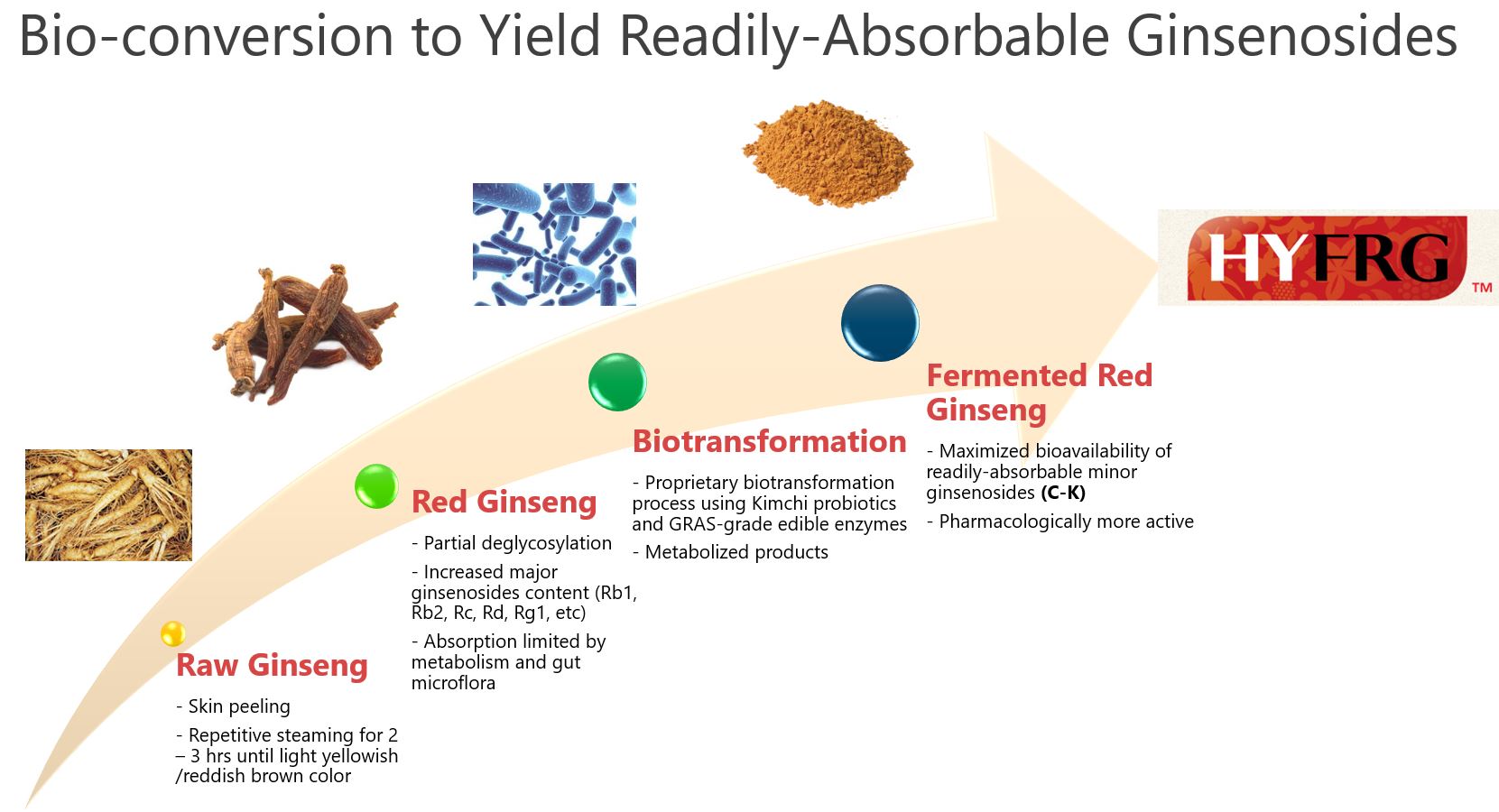
115-Times More Bio-Absorption Than Generic Korean Red Ginseng
HYFRG™ is clinically proven to have 115 times higher bio-absorption of the most powerful ginseng bioactive compound, Compound K, as compared to regular red ginseng.
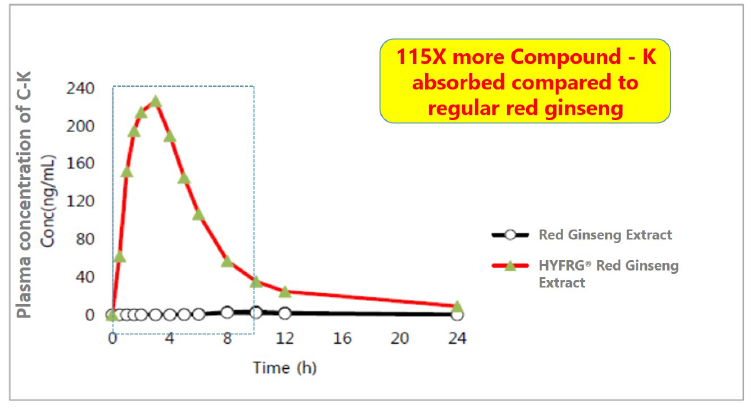
Choi, Il-Dong, et al. "Enhanced Absorption Study of Ginsenoside Compound K (20-O-β-(D-Glucopyranosyl)-20 (S)-protopanaxadiol) after Oral Administration of Fermented Red Ginseng Extract (HYFRG™) in Healthy Korean Volunteers and Rats." Evidence-Based Complementary and Alternative Medicine 2016 (2016).
Key Benefits:
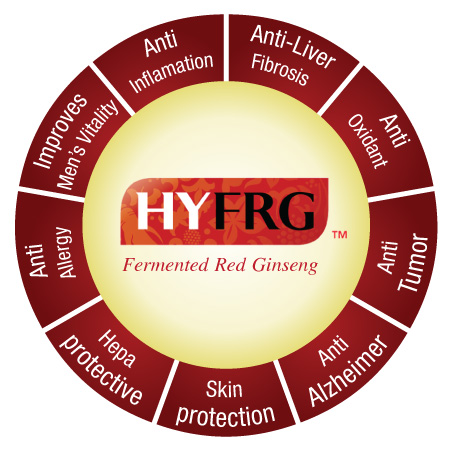
Park, Eun-Kyung, et al. “Inhibitory effect of ginsenoside Rb1 and compound K on NO and prostaglandin E2 biosyntheses of RAW264. 7 cells induced by lipopolysaccharide.” Biological and Pharmaceutical Bulletin 28.4 (2005): 652-656
In this study, the anti-inflammatory activities of ginsenoside Rb1, which is a main constituent of the root of Panax ginseng (Araliaceae), and of its metabolite compound K were investigated. Compound K potently inhibited the production of substances leading to inflammation (NO and prostaglandin E2) in immune system cells (macrophage). These findings suggest that ginsenoside Rb1 can be transformed to compound K by intestinal bacteria, and compound K may be effective against inflammation.
Kim, Bong-Gwan, et al. “Fermentation of Korean red ginseng by Lactobacillus plantarum M-2 and its immunological activities.” Applied biochemistry and biotechnology 165.5-6 (2011): 1107-1119.
30 healthy adults were divided into two groups: one received 2g HYFRG™ while the other received normal red ginseng. Their immune cells (IgA and IgG) were analysed. After one week, the increase in IgA and IgG levels by HYFRG™ was higher compared to that by normal red ginseng. These results suggest that HYFRG™ helps improve immune-stimulating activities in the human body.
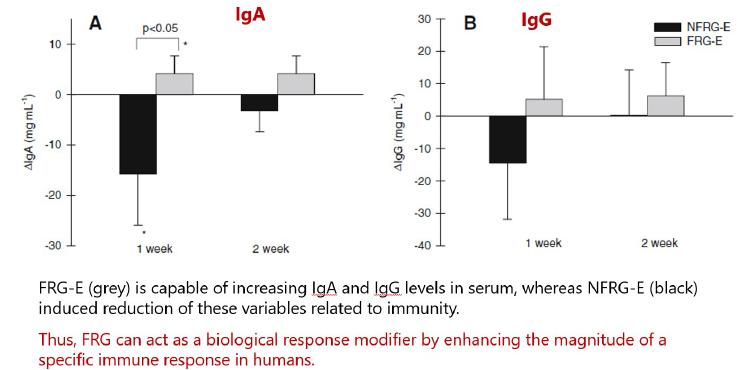
Kaneko, Hitoshi, and Kozo Nakanishi. “Proof of the mysterious efficacy of ginseng: basic and clinical trials: clinical effects of medical ginseng, Korean red ginseng: specifically, its anti-stress action for prevention of disease.” Journal of pharmacological sciences 95.2 (2004): 158-162.
23 male taxi drivers (43 – 65-year-old) received either red ginseng and placebo before and after their work. Their mental fatigue level was measured. Individuals who consumed red ginseng experienced less mental fatigue after work whereas the placebo group did not experience any effect, indicating that red ginseng helps in relieving work stress and improving cognitive performance.
Wang, Jia, et al. “Anti-fatigue activity of the water-soluble polysaccharides isolated from Panax ginseng CA Meyer.” Journal of ethnopharmacology130.2 (2010): 421-423
Mice were fed with the following test materials for 3 weeks before they went through a forced swimming test: 1) Normal diet; 2) Positive control (100mg/kg Resveratrol); 3) 300mg/kg red ginseng (JRG); 4) 300 mg/kg HYFRG™.
The results showed that HYFRG™ significantly increased total swimming time of mice and delayed the onset of exhaustion. HYFRG™ also significantly suppressed fatigue substance (lactic acid) in the mice’s skeletal muscle.
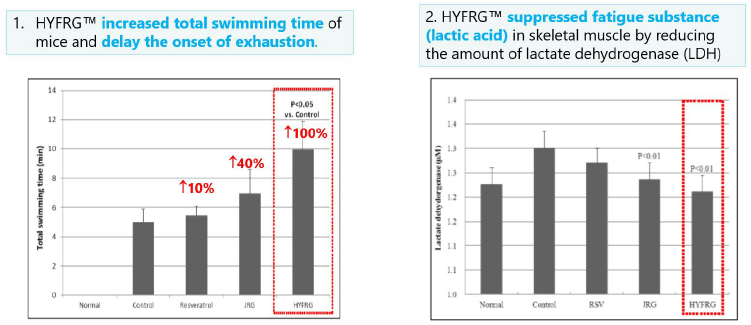
De Andrade, Enrico, et al. “Study of the efficacy of Korean Red Ginseng in the treatment of erectile dysfunction.” Asian journal of andrology 9.2 (2007): 241-244
60 patients with erectile dysfunction were given 1) Placebo & 2) 1000mg Korean Red Ginseng (KRG) capsule, 3 times a day for 12 weeks. Questionnaire were conducted to calculate their International Index of Erectile Function (IIEF-5) score before and after the experiment.
KRG group showed significant improvement in the IIEF-5 score after 12-week treatment, indicating a potential role of it to be an effective alternative phytotherapy for treating male erectile dysfunction.
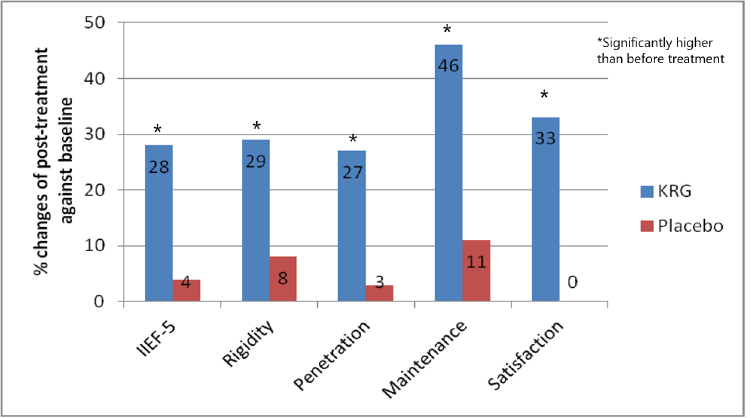
Korea Yakult Co. Ltd
Hairless mice were fed with two doses (125mg/kg and 500mg/kg) of HYFRG™ and were exposed to UVB ray 3 times/week for 8 weeks. Mice which consumed HYFRG™ showed obvious wrinkle reduction effect and improved skin moisture after 8-week consumption as compared to control.

